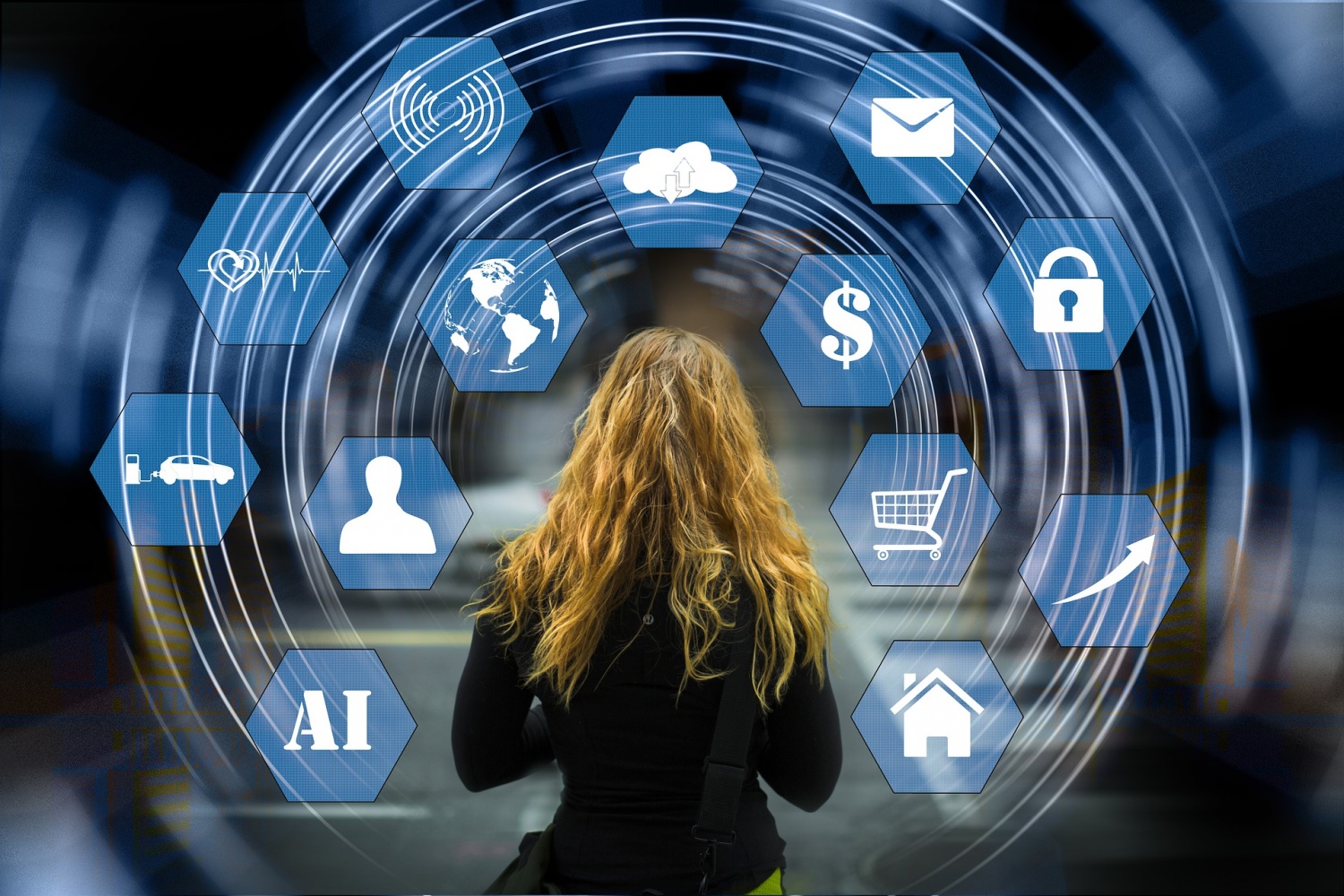
Today's workforce is more connected than ever. From virtual team collaboration to cloud-based software and mobile devices, businesses are increasing their usage of technology in the workplace to streamline processes and drive performance.
That being said, the ways in which technology is currently transforming the workplace is vast and expansive. From AI to big data, HR technology to virtual reality, check out these 10 ways technology is currently transforming the modern workplace:
1. Virtual Collaboration
Virtual collaboration is the act of using technology to connect remote teams. This allows employees to stay connected to the workplace and each other, even when they aren't located in the same office, state, or country. Virtual collaboration tools and technologies include things like:
-
Video chat
-
Screen sharing
-
Virtual meeting tools
-
Online collaboration apps
The benefits of virtual collaboration are many, including cost savings from reduced office space, reduced travel costs and expenses, and better employee retention.
Studies also show that employees who regularly engage in virtual collaboration report improved satisfaction with their work-life balance, higher job satisfaction, and increased employee engagement.
Additionally, virtual collaboration can be helpful for remote workers, employees with accessibility issues, and employees with childcare obligations or other family responsibilities that make regular travel to the office difficult or impossible.
"The role of technology in the workplace is constantly evolving," says Ryan Delk, CEO of Primer. "I'm thankful for virtual collaboration, as it has allowed for more seamless and effective communication between my coworkers."
2. AI in the Workplace
Artificial intelligence (AI) is a computer system designed to complete tasks that would be considered cognitive if completed by a human.
AI is increasingly being used in the workplace, largely because it has the potential to greatly increase efficiency, productivity, and profitability. AI can take on monotonous and repetitive tasks, allowing humans to focus on more important, strategic tasks.
Examples of AI in the workplace include customer service bots and virtual assistants, like Amazon's Alexa and Apple's Siri. AI can also be used to discover patterns and trends in data to make predictions that can help businesses make more informed decisions.
AI can even be used to create new products and services, helping companies develop innovative offerings that better serve their customers.
According to Jae Pak, Founder of Jae Pak MD Medical, "AI is greatly impacting the workplace by automating tasks, providing predictive analytics, and improving communication. In the near future, AI will become even more involved in the workplace as we see the development of more AI-powered tools and applications."
3. Big Data and Data Analytics
Businesses are now able to track and measure just about anything, thanks to big data and data analytics. This has led to a greater understanding of customer behavior, more efficient operations, and better decision-making across the board.
John Sarson, CEO of American Crypto Academy states, "Big data and data analytics are currently two of the most transformative technologies in the workplace. If you can harness these technologies, your team will be able to gain a major competitive advantage."
4. Cloud Computing
Cloud computing is when organizations store and access data and software on remote servers. Cloud computing is experiencing a surge in popularity due to its many benefits. Cloud computing can increase security because all data is stored on a remote server, not on an organization's computers.
According to Eric Elggren, Co-Founder of Andar, "The advent of cloud computing has allowed my team to be more efficient in our work. We can now access files and data from anywhere, at any time. This has allowed us to be more agile in our work and has resulted in increased productivity."
5. Mobile Collaboration
Mobile collaboration is the act of using mobile devices to enhance the way teams work together. This includes tools like apps, SMS, chat apps, video conferencing, and more. There are many ways in which organizations can use mobile collaboration to improve their business processes, including managing customer relationships, improving customer experience, and building stronger teams.
"The rise of mobile technology has transformed the way we work," says Kirin Sinha, CEO of Illumix. "We can now stay connected to work at all times, no matter where we are."
It's worth noting that while there are clear advantages to using cloud computing technology in the workplace, it's important for employees to have their given time off. The ability to stay connected to the workplace at all times can have some drawbacks.
For one, it can give the appearance that workers are available all the time. And too much interaction with work can quickly lead to burnout.
6. Continuous Learning and Development for Employees
As technology continues to improve and new technologies emerge, businesses must ensure their employees are equipped with the knowledge and skills necessary to leverage these new tools.
Continuous learning and development for employees is a process in which organizations invest in their employees' growth over time. This includes offering opportunities for employees to attend training, learn new skills, and become more knowledgeable in their field.
This can be done through in-house training, online courses, workshops, and conferences, as well as through social learning platforms, where employees can connect and collaborate with other team members to learn new skills and up their game.
"In the past, employees would often have to wait for scheduled training sessions or annual performance reviews to receive feedback on their work," says Patricio Paucar, Co-Founder and Chief Customer Officer of Navi.
"But with today's technology, employees can receive real-time feedback and have access to constant learning and development opportunities. This helps employees improve their performance more quickly and makes them more engaged in their work."
7. Robotics and Automation
Robotics and automation are closely connected, as automation is a type of robotics. Organizations can use automation tools to complete repetitive tasks, which usually include mundane tasks that don't require human interaction. In many cases, organizations are implementing automation to reduce costs, increase productivity, and improve accuracy.
"In just a few short years, robotics and automation have gone from being a rarity in the workplace to becoming commonplace," says Matt Woods, Co-Founder and CEO of SOLD.com. "And as these technologies continue to evolve, they are increasingly being used to perform a wider range of tasks."
Automation can be used in virtually any industry, and it is on the rise. The automotive industry, for example, is embracing automation to produce more cars with fewer employees.
The healthcare industry is using automation to streamline processes and improve patient care. Automation can be especially helpful for organizations that have a high volume of work or work with high-risk materials, as humans are not always able to keep up.
8. Telecommuting and Remote Working
Telecommuting and remote working are two terms that are often used interchangeably, but they actually mean slightly different things. Telecommuting is when employees work from home or a location other than the company's office, while remote working is when employees work from another country.
"Love it or hate it, the pandemic is responsible for a large portion of people working from home right now," says Phillip Akhzar, CEO of Arka. "In many cases, it's forced employees and employers to get creative about how they get work done every day.
Another reason remote working and telecommuting are on the rise is due to the fact that they can reduce costs and improve employee engagement.
When done effectively, remote working and telecommuting allow employees to work when they are most productive and have greater flexibility in choosing when and where they work.
This can also help reduce employee burnout and turnover by allowing employees to control their work hours and responsibilities.
9. Virtual Reality and Augmented Reality
Virtual reality and augmented reality technologies are used to create immersive VR and AR experiences. VR is a computer-generated model of a real-world environment (or an imagined environment), while AR is a live view of the real world with computer-generated enhancements.
These advancements in technology are still new in the workplace, but they are expected to become increasingly popular in the near future.
"It wasn't that long ago that the idea of VR being a useful tool in business was considered sci-fi," says Michael Fischer, Founder of Elite HRT. "But here we are in 2022, and it has become an integral part of many workplaces."
In fact, VR and AR are currently being used in a wide range of industries, including healthcare, education, real estate, and retail. VR and AR can be used for training and simulation, visualization, and artificial visualization.
10. HR Technology
HR technology is used to automate and digitize HR processes. This includes onboarding, offboarding, performance reviews, and other HR processes. HR technology can help businesses be more efficient and effective in managing employees. It can also help improve employee satisfaction, as employees can typically complete tasks more quickly and easily with HR technology.
"The amount of work that takes place behind the scenes of HR is absolutely staggering and often doesn't get the recognition it deserves," says Ryan Rottman, Co-Founder and CEO of OSDB Sports.
"By automating repetitive tasks, HR professionals can focus on more strategic initiatives that will have a greater impact on the company as a whole."
This technology can be as simple as a few online tools or as complex as an integrated HR system. It's important to partner with a technology partner that understands your business and can offer insights, advice, and recommendations. It's also important to ensure that the technology is easy to use, engaging, and provides a positive experience for your employees.
Conclusion
Has technology transformed your workplace? Given the rise of digital tools and platforms, it's likely that the answer is yes. What's more, it's also likely that you will see even more transformative changes as technology advances.
It's important to embrace change and use it to your advantage. You have a wealth of resources available that can make your job-and your life-a lot easier.
* This is a contributed article and this content does not necessarily represent the views of techtimes.com





